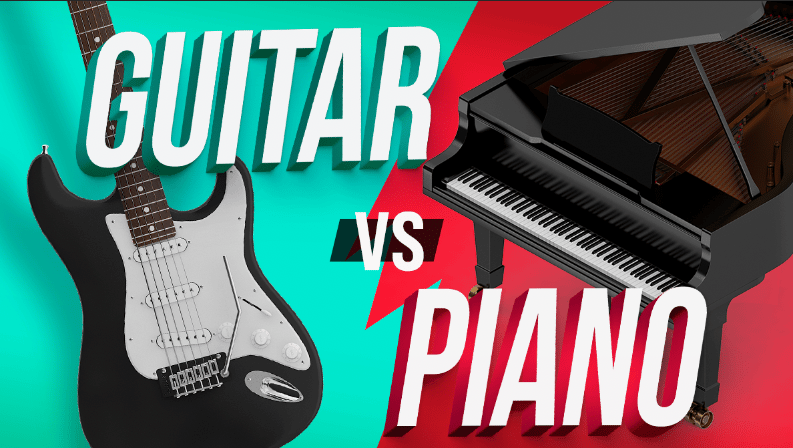
Guitars and pianos are frequently the #1 and #2 on lists of the world’s most popular musical instruments. So if you want to learn how to play an instrument, it’s natural to wonder which is a better choice, guitar vs. piano? Is one easier than the other? Is one more suitable for beginners? And while the instrument you choose is a personal choice only you can make, it might help to learn about the similarities and differences between piano and guitar.
Subscribe to The Note for exclusive interviews, fascinating articles, and inspiring lessons delivered straight to your inbox. Unsubscribe at any time.
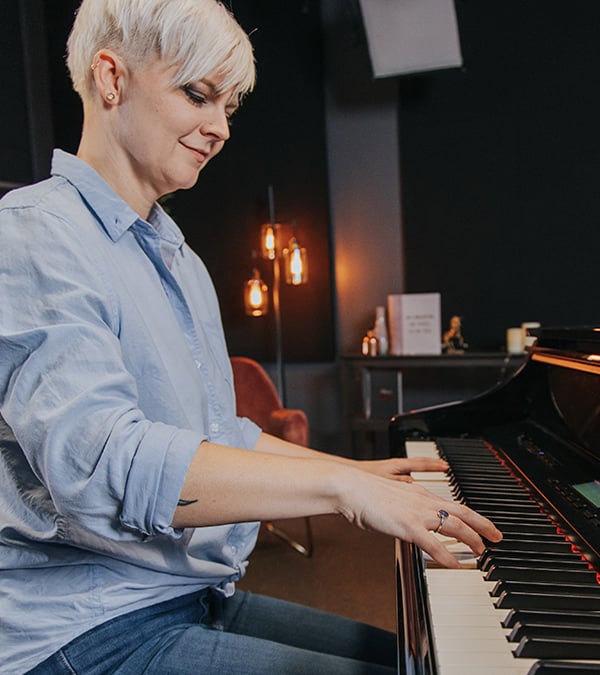
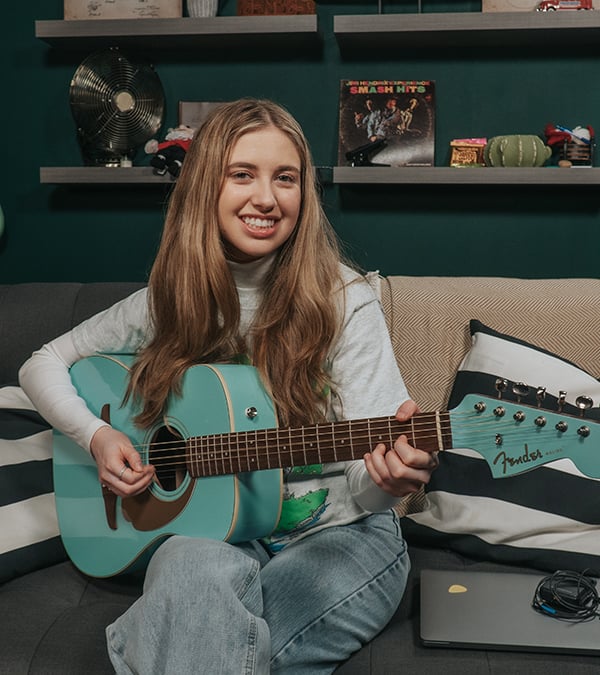
Guitars and pianos are both string instruments! On a guitar, this is quite obvious. On a piano, not so much. But a piano works by hitting strings with hammers, which are controlled by the keys. So, both instruments produce sound by means of resonating strings.
Many instruments, such as wind and brass instruments, only produce one note at a time. Piano and guitar are unique in that they can play many notes at once. You can play both melody and harmony on both instruments.
Pianos are a little better at this—you have ten fingers, so you can theoretically play ten notes at the same time. Guitars have six strings, so only six notes can resonate at the same time. (However, most piano chords aren’t ten notes and many guitar chords involve fewer than six strings!).
Pianos and guitars are used in a wide variety of music genres, from classical and folk to jazz and rock. This being said, there is more classical repertoire for piano and more rock and folk repertoire for guitar.
Your musical taste is likely the biggest factor in deciding which instrument to learn. Still, it doesn’t hurt to learn that the piano has a long history of rock’n’roll. In fact, Brian May (the guitarist of Queen) once remarked that the true pioneers of rock’n’roll were the pianists Jerry Lee Lewis and Little Richard, not guitarists.
The guitar also has a big place in classical music. Notable classical composers who wrote prolifically for the guitar include Fernando Sor (1778-1839), Mauro Giuliani (1781-1829), and Fernandino Carulli (1770-1841).
Both instruments require learning how to coordinate the left and right hands. How this works in each instrument is quite different, however. On the guitar, each hand has a different job: one strums or picks the strings and the other frets the notes. On the piano, each hand plays individual notes. Hand independence is a common struggle among beginner pianists. Meanwhile, guitarists may struggle with finger independence on their fretting hand and picking technique on their right.
Compared to other instruments, it is fairly easy to make a decent tone as a beginner on either instrument. This is especially true for pianos, which only require occasional tuning and no effort to produce a pleasurable tone.
Guitars require regular tuning, but since it is a fretted instrument, you don’t need to worry about finger placement the way you would on a violin. There is, however, some technique required to produce a good tone on a guitar without buzzing.
Since guitars and pianos are both chord-based instruments, beginners can sound good on either instrument fairly quickly. Just learn a few chord shapes on either instrument, play a simple rhythm, and you have the foundation to many pop songs.
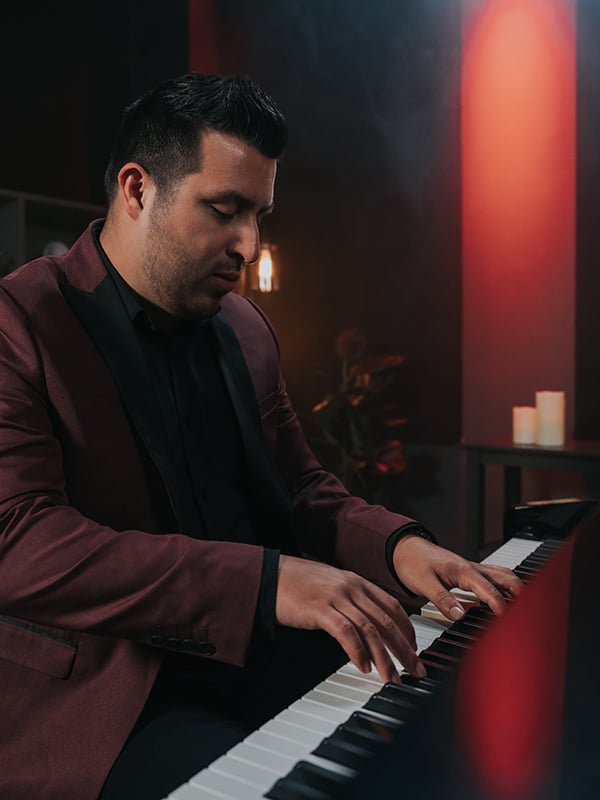
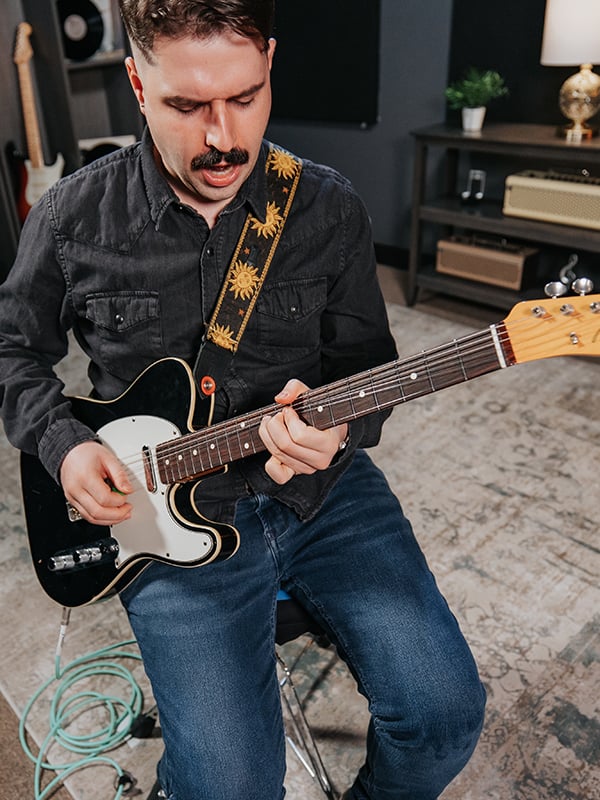
This is perhaps the biggest difference between piano and guitar. On the piano, the layout is quite simple: notes are laid out in a row from lowest to highest pitch. This straightforward layout makes the piano an ideal instrument for learning music theory.
On a guitar, there are six strings laid across a fretboard. A fretboard (typically) has 21 to 24 frets, which divide the fretboard into 21 to 24 semitones. This means there is more than one way to play the same note on a guitar. Playing a scale on a guitar is less straightforward: while you can theoretically go up a fretboard by whole and half steps, most guitarists play scales by crossing through different strings.
Scale on a guitar.
Scale on a piano.
So, guitar geography can be complex. But it does hold some advantages. The fingering pattern you use to play a scale on a guitar can be transplanted to start on any fret on the same string. On a piano, each scale has its own pattern of black and white keys and fingering pattern.
Some people find the guitar’s layout easier to improvise on. Because once you understand the interval relationship between frets, improvising becomes more “predictable.”
Another big difference between the instruments are their notation systems. While music for either instrument can be written on a standard, five-line staff, guitarists also use tablature (TABs) while pianists tend to stick with the grand staff.
Tablature is a notation system specifically for guitar. In guitar tablature, numbers representing frets are plotted on six lines that represent strings. Tablature shows you exactly where to place your fingers, which is useful when there are multiple ways to play one note. Tablature is simple and straightforward, and you can learn how to read it fluently in a short period of time.

The piano’s notation is plotted on the grand staff. There are two lines of music, one for each hand. Piano doesn’t have a “tablature” shorthand of its own, and learning how to read sheet music can be a sharp learning curve for beginners. Reading sheet music can be extra challenging for piano players because you need to simultaneously read treble and bass clefs.

The good news is, both instruments can make use of chord charts, which are widely available on the internet.
Guitars require regular tuning. Pianos do not.
It’s significantly easier to produce a nice tone on a piano: you press a key and that’s it. Sure, refining the movement to articulate the perfect, expressive tone is a skill that takes years to develop, but beginners don’t need to worry about buzzy notes or sounding off-pitch.
Some practice is required to produce a pleasant tone on the guitar. Beginners can struggle with pressing the right strings, pressing hard enough, or avoiding open strings. Pressing hard on steel strings can even be painful on a beginner’s fingers. But you’ll eventually grow thicker skin (literally!) and with practice, the pain goes away.
🎹🎸 EXPRESSIVE NOTES — POINT TO GUITAR? One thing pianos can’t do is bend pitch or vibrato. Guitarists can add expression to a single note by bending the string to alter the pitch or adding vibrato. This is unfortunately not possible on a piano.This is more of a cultural difference, but it’s a pretty important one. The piano has a reputation for being an independent instrument. Sure, there are piano jazz piano trios and piano concertos, but piano music is dominated by solo pieces. The piano’s sheer size may be partly to blame: you can’t bring your piano to a camping trip and play songs at the campfire!
The guitar, on the other hand, is a very social instrument. You can definitely bring a guitar to a campfire sing-along, and the guitar is a central instrument of any modern band.
But don’t worry too much about being stuck playing alone or playing with others: you can do both! Pianos have a place in many ensembles, and guitar backing tracks are widely available to help accompany a soloist.
Generally, pianists only need one piece of gear: the piano. Yes, there are accessories like pedals, stands, and benches, but these often come with the piano purchase.
On the other hand, serious guitarists can accumulate a lot of gear! Effect pedals, amplifiers, and even multiple guitars for different uses is not uncommon.
So, both instruments require some financial investment. Guitar may require more shopping, but pianos (especially acoustic pianos) can be an expensive one-time investment.
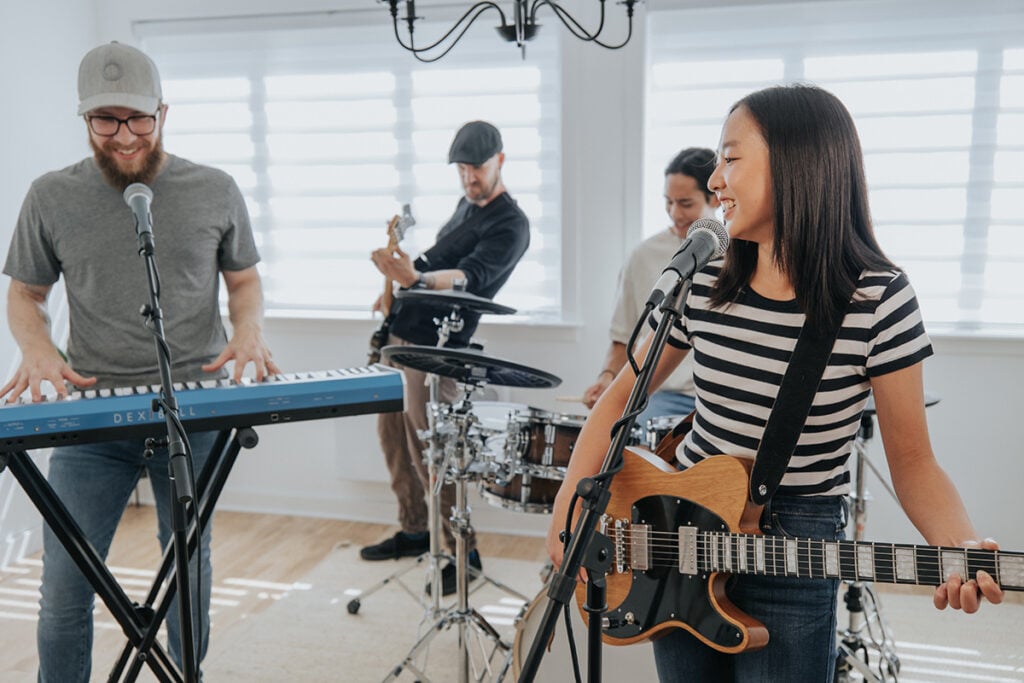
This is a difficult question to answer because the instruments are so different, and every musician has their own opinion. Perhaps the best answer is that each instrument is easier or harder in different respects.
Piano is arguably easier for beginners to learn. In fact, anyone can learn a short tune on a piano soon after sitting down at one for the first time. That’s because there is no special technique required to produce a sound—it’s just pressing a key. Meanwhile, beginner guitarists need to learn how to sit, hold the guitar, and use their right and left hands to produce a pleasant tone that doesn’t buzz.
However, both instruments require years—possibly a lifetime—to truly master. High levels of dexterity are required to play nuanced expression, impressive runs, and complex chords on both instruments.
If you understand and can play chords, you can play the foundation of many songs on both guitar and piano. However (and this is a generalization), playing chords on a guitar may get you “further.” This is because most people know the guitar as a chord-strumming instrument and piano as a melody-and-harmony instrument. So, knowing how to play a simple chord progression with a simple strumming pattern can make you appear more like an intermediate player than if you did the same on a piano.
But of course, this depends on your individual goals. A guitarist whose goal is to play lead solos will need to invest more practice. And a pianist whose main goal is to accompany their own vocals may be happy with just playing chords.
Even if you decide that the guitar is the right first instrument for you, the piano keyboard is still worth learning. Music theory—such as the structure of chords and intervals—is easier to visualize on a keyboard. Keyboard knowledge is also useful if you decide to explore music production because keyboards are the most common interface.
Which instrument to learn first is a decision only you can make. Affordability, portability, and availability of lessons may impact your choice, but what you ideally want is an instrument you’ll be motivated to play. So it might make sense to have your preferred music genre guide your choice.
Even then, you’re not limited to the guitar if you’re a rock fan and you’re not limited to piano as a classical fan. And the type of music a person listens to isn’t always the same genre they like to play. So, spend some time listening to piano and guitar music; you may be surprised!
And if you like both, why not learn both? 🙂
Subscribe to The Note for exclusive interviews, fascinating articles, and inspiring lessons delivered straight to your inbox. Unsubscribe at any time.
Charmaine Li is a Vancouver writer who has played piano for over 20 years. She holds an Associate diploma (ARCT) from the Royal Conservatory of Music and loves writing about the ways in which music—and music learning—affects the human experience. Charmaine manages The Note. Learn more about Charmaine here.
/marketing/pianote/promos/april/banner-bg-m.webp)
We use cookies for traffic data and advertising. Cookie Policy »
/marketing/pianote/promos/april/banner-title.webp)